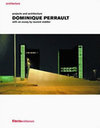
-
 Anglický jazyk
Anglický jazyk
Archaeological sites in Wiltshire
Autor: Source: Wikipedia
Source: Wikipedia. Pages: 49. Chapters: Stonehenge, The Ridgeway, Silbury Hill, Avebury, Scratchbury Camp, Durrington Walls, Normanton Down Barrows, Stonehenge Cursus, Wansdyke, Bratton Castle, Figsbury Ring, Battlesbury Camp, West Kennet Long Barrow, Vespasian's... Viac o knihe
Na objednávku, dodanie 2-4 týždne
16.92 €
bežná cena: 18.80 €
O knihe
Source: Wikipedia. Pages: 49. Chapters: Stonehenge, The Ridgeway, Silbury Hill, Avebury, Scratchbury Camp, Durrington Walls, Normanton Down Barrows, Stonehenge Cursus, Wansdyke, Bratton Castle, Figsbury Ring, Battlesbury Camp, West Kennet Long Barrow, Vespasian's Camp, Woodhenge, Bluestonehenge, Cranborne Chase, Barbury Castle, Chiselbury, Westbury White Horse, Robin Hood's Ball, Whitesheet Hill, The Sanctuary, Membury Camp, Stonehenge Landscape, Sidbury Hill, Wiltshire, Windmill Hill, Avebury, Littlecote Roman Villa, White Barrow, New henge at Stonehenge, All Cannings Cross, Bincknoll Castle, Bush Barrow, Harrow Way, Casterley Camp, Chisenbury Camp, Nettleton, Wiltshire, Kennet Avenue, Fosbury Camp, Castle Ditches, Beckhampton Avenue, Ackling Dyke, The Longstones, Marden Henge, Overton Hill, Ermin Street, South Street barrow, Adam's Grave. Excerpt: Stonehenge is a prehistoric monument located in the English county of Wiltshire, about 3.2 kilometres (2.0 mi) west of Amesbury and 13 kilometres (8.1 mi) north of Salisbury. One of the most famous sites in the world, Stonehenge is composed of earthworks surrounding a circular setting of large standing stones. It is at the centre of the most dense complex of Neolithic and Bronze Age monuments in England, including several hundred burial mounds. Archaeologists have believed that the iconic stone monument was erected around 2500 BC, as described in the chronology below. One recent theory however, has suggested that the first stones were not erected until 2400-2200 BC, whilst another suggests that bluestones may have been erected at the site as early as 3000 BC (see phase 1 below). The surrounding circular earth bank and ditch, which constitute the earliest phase of the monument, have been dated to about 3100 BC. The site and its surroundings were added to the UNESCO's list of World Heritage Sites in 1986 in a co-listing with Avebury Henge monument. It is a national legally protected Scheduled Ancient Monument. Stonehenge is owned by the Crown and managed by English Heritage, while the surrounding land is owned by the National Trust. Archaeological evidence found by the Stonehenge Riverside Project in 2008 indicates that Stonehenge served as a burial ground from its earliest beginnings. The dating of cremated remains found on the site indicate burials from as early as 3000 BC, when the initial ditch and bank were first dug. Burials continued at Stonehenge for at least another 500 years. The Oxford English Dictionary cites Ælfric's 10th-century glossary, in which henge-cliff is given the meaning "precipice", a hanging or supported stone, thus the stanenges or Stanheng "not far from Salisbury" recorded by 11th-century writers are "supported stones". William Stukeley in 1740 notes, "Pendulous rocks are now called henges in Yorkshire...I doubt not, Stonehenge in Saxon sign
- Vydavateľstvo: Books LLC, Reference Series
- Rok vydania: 2022
- Formát: Paperback
- Rozmer: 246 x 189 mm
- Jazyk: Anglický jazyk
- ISBN: 9781156091326











